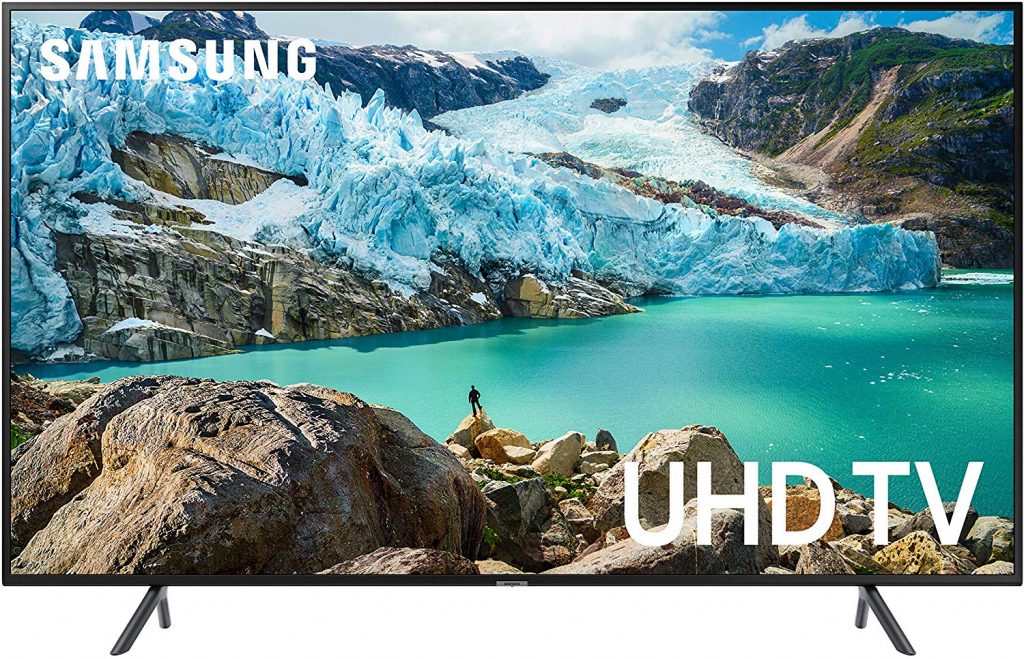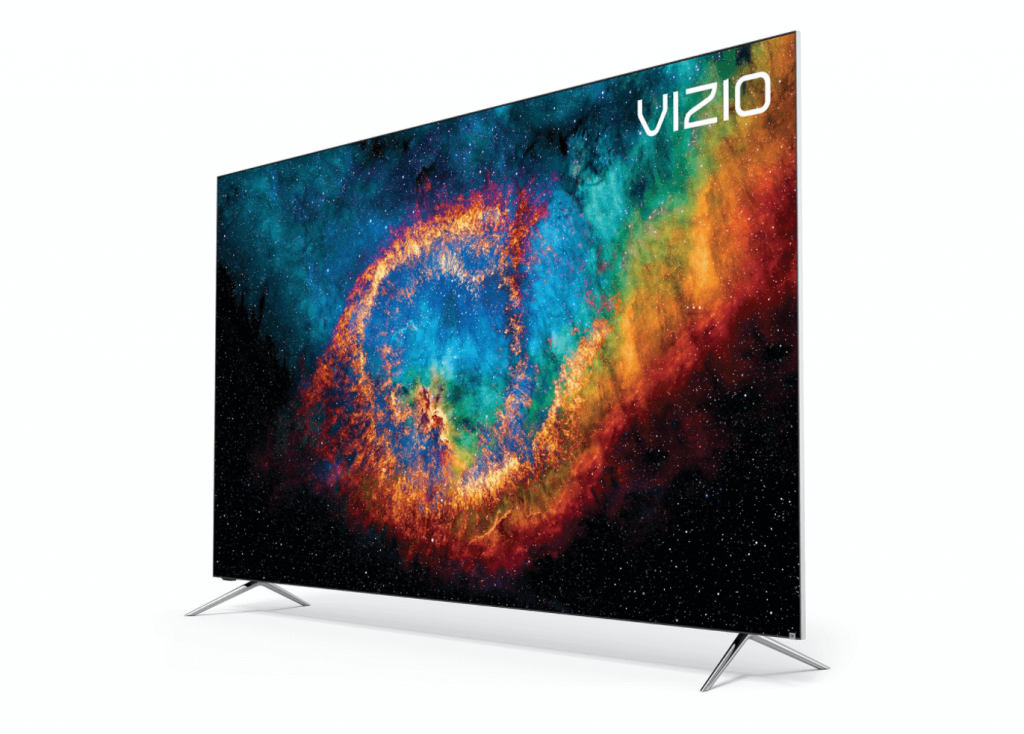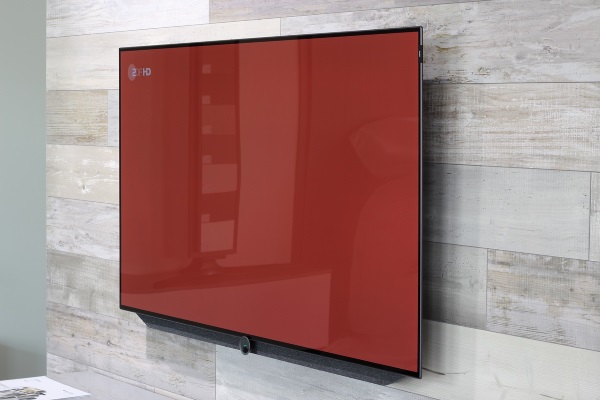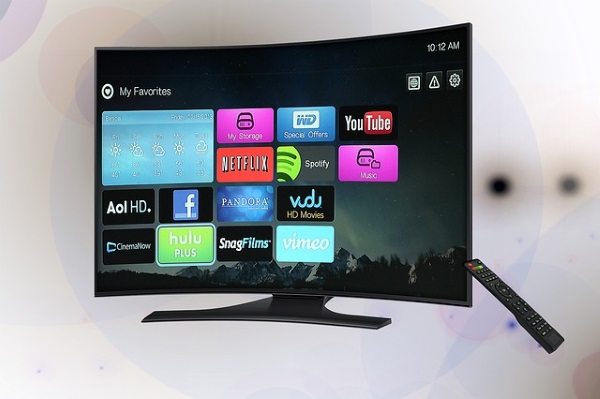Samsung vs Vizio TV – Which Should you Buy?

There’s never been a better time to be in the market for a high-end TV. Whether you want an LED or a UHD display, you’re sure to find the perfect fit for your living room. When looking at specific television brands, Samsung and Vizio are two names likely to show up on your shopping list. We regularly get e-mails and comments from TechJunkie readers asking for our advice about which one of these two brands to buy from.
At TechJunkie, we want to help our readers make these sorts of decisions about their tech. However, we also don’t like to make direct technology recommendations, since a great TV for us might not be such a great TV for you, and vice-versa. There’s just too much personal preference involved, and we try to stay objective.
But what we can do is provide you with an overview of both brands. We’ll also highlight the things an informed consumer should be looking for when they shop for a new TV, regardless of what brand(s) they prefer. This overview of Vizio and Samsung TVs should help you choose the one that is the best fit for your needs and budget.
Samsung Televisions

Samsung is a South Korean technology company that has been around for almost forty years. It produces a wide range of high-end tech that includes TVs, smartphones, game consoles, wearables, and smart refrigerators.
The company concentrates on quality and usability, and it shows in their products. Samsung TVs are famous for their high-quality screens and long lifespan. You may be paying more upfront for a Samsung TV, but you can expect it to last a long time.
Samsung is popular for its long-lasting products and its position as a screen manufacturer. Not only does Samsung TVs use Samsung screens, but some competitors buy Samsung screens for their TVs and products as well.
For example, the iPhone has been using Samsung screen panels ever since the iPhone X, as no other company was able to produce the quantity and quality of screens that Apple needed to make that phone a success.
Vizio Televisions

Vizio is an American consumer electronics corporation headquartered in Irving, California. Vizio produces a variety of audio and video equipment but mainly concentrates on TVs, sound equipment, and associated hardware. The Vizio brand isn’t quite as well-known as Samsung yet but it’s definitely on the rise. Vizio was originally a warehouse brand that operated as a club before going mainstream.
Vizio products are of outstanding quality, but rather than focus on screens and traditional measurements, Vizio emphasizes smart technology. It concentrates on how users are evolving in their use of technology. For example, some Vizio TVs don’t have TV tuners (i.e., buttons for changing the channel) because broadcast TV is on its way out. On the other hand, some Vizios come with an Android tablet that enables SmartCast streaming, making modern television viewing more accessible.
Does Vizio Make Good TVs?
Vizio does make good TVs, and at a competitive price as well. Let’s look at the positives and negatives of Vizio televisions and select our favorite of their lineup.
Positives
- Competitively Priced: Vizio TVs have similar features to Samsung TVs, but for a much lower price. In many cases, the cost can be over a hundred dollars cheaper.
- Dark Room Picture Quality is Amazing: Vizio TVs have a full-array dimming backlight. This produces deeper blacks and less glare, so your television is more comfortable to watch.
- Low Input Lag: If you’re a gamer, you’re going to want this TV. Due to the low input lag, you’ll be able to make faster plays and have a competitive chance against other players.
Negatives
- Unpolished: These televisions can have firmware issues, and have a cheaper design when compared to Samsung. These concerns have been fixed in some of their updated televisions, but not all of them.
- Upscaling Issues: Low-quality media like SD channels or DVDs don’t measure up to the sharpness of Samsung or other brands.
Which Vizio TV Series Is The Best?

Vizio P Series Quantum 2020
The Vizio P Series Quantum is the better of the Vizio televisions. It has optimal picture quality, excellent motion handling, and exceptionally low input lag. It’s also one of the brightest televisions on the market. This means there will be no problem overcoming glare. The contrast, uniformity, and dimming system are fantastic. It comes with five HDMI ports as well, allowing you to connect all of your devices at once.
This television is multi-purpose. If you’re gaming, the low input lag will be significant enough to remain competitive. If you want to watch Netflix, the lack of glare will help you see better. The Quantum X is a close second to the Quantum P; however, the X series is currently too expensive. If you’re okay with a higher-priced model, go for the Quantum X. If not, stick with the P.
Does Samsung Make Vizio TVs?
No, Samsung doesn’t manufacture Vizio televisions. Vizio is an independent company that outsources the manufacture of its televisions in Taiwan by AmTran Technology. This Taiwanese company operates multiple locations across Asia.
Both companies offer great quality products. Samsung is almost unbeatable in terms of screen quality, audio, and usability. Vizio delivers good products with excellent screens at very competitive prices and focuses on innovation and user experience. Vizio’s known for pricing its HDTV products lower than the competition.

What To Look For In Your Next TV
Putting brands aside for the moment, what should you be looking for in a new TV? Shopping for a new TV is now more complicated than ever, thanks to more options, new features, and competing standards. LED, LCD, OLED, QLED, 4K, 8K, HD, UHD, 1080p, and other features will be stickered across screens in the store. But what does it all mean?
Before you even fire up your web browser to do some research, you should assess your needs and the space the TV will inhabit. This will help narrow down your choices. Then think about these questions.
- What do you mostly watch? TV shows? Movies? Streams? Video games?
- Where do you mostly sit in reference to the TV? In front? At an angle? Far away? From the kitchen? Your bed?
- How important is the screen resolution? More important than screen size? Not as important as being smart?
- What is your budget for a new television? Unlimited? Limited?
All these factors should be considered when shopping for a new TV. It is effortless to get caught up in the excitement of looking at the latest, shiniest TV and lose sight of your budget limitations and the way you intend to use the TV. It is also easy to spend a lot of money on TV features you may never use. Buying decisions are about getting what works for you, your needs, and your budget.
There is no point in spending your budget on getting a mediocre screen with better smart technology if you never end up using those features. You would be much better off buying the best possible screen and audio so you can experience the best of the best. Someone more interested in the coolest smart features than in having the ultimate in resolution should make the opposite decision.
Screen Size
You measure TV screens in the diagonal, from one corner to the opposite corner. The smallest mainstream TVs today start around 20 inches and can be larger than 100 inches, although most stores top out at the 70-inch screen size range. The size of the screen you should buy depends on the space in which it will sit, the size of the room, how far away you will sit to watch it, and your budget.
The standard measurement for screen size and viewing is to sit 1.6 x screen size inches away from the screen. This means if you buy an 80-inch screen, you will want to sit 112 inches away for the best experience. You may not want to sit that 80-inch screen in a small room (unless perhaps for a dedicated media room) as it will completely dominate the space.
Screen Resolution
Screen definition is the measurement of how many pixels a screen has, which directly correlates to how detailed it is. An HDTV is 1920 x 1080 (1080p), so it has 1920 pixels on the horizontal and 1080 on the vertical, which is around 2 million in total. A 4K TV (UHD) has 3840 x 2160 pixels, 3840 on the horizontal and 2160 on the vertical, which is almost 8 million.
4K TV is much more detailed, but at the moment it is also much more expensive. Plus, most cable and satellite companies are not producing much, if any, 4K programming.

Smart or Not
Smart TVs refer to whether the set is Internet-enabled and can stream content from Netflix, Hulu, or use apps to add features. Some TVs go as far as voice command and full programmable EPG while others just have a web browser and streaming capability. If your TV is not smart, you can buy devices that provide the same capabilities.
The majority of TVs sold are smart but not everyone who owns one uses those smart TV capabilities.
Viewing Angle
One often-overlooked aspect of choosing a new TV is the viewing angle. If you’re setting up a media room and everyone will be more or less in front of the TV, then the viewing angle of the TV won’t matter much. If you are buying one for a family room where people will be in different positions, it becomes more of an issue.
LCD and LED have fairly limited viewing angles, meaning the further away from the front of the TV you are, the worse your viewing experience. Viewing angles differ by manufacturer so test before you buy.
Connections
Even smart TVs need to connect to other devices to work properly. When TV shopping, you need to consider what you’re going to be connecting to it. If you use a cable or satellite box, you will need an HDMI connection. If you use an Apple TV or Roku, you will need another HDMI connection.
If you regularly use a games console, you will need a third connection for that. Ancillary devices such as external hard drives or smart boxes will use USB, so a couple of those would be good too.





















12 thoughts on “Samsung vs Vizio TV – Which Should you Buy?”
Vizio spends more time on quantity than they do quality. In fact, they have a limited QA hardware and software team but a sales team the size of a small army. They are also overly focused on developing an ad insertion technology to pull in even more revenue. That is good, it makes the TV cheaper for you, but bad because if you don’t agree to the on-screen terms of letting them crawl into every aspect of your digital life then the SmartTV feature is turned off. It’s the ultimate Big Brother. Finally, there is no other focus for the company other than TVs and sound bars (the biggest money maker). They make the best sound bars hands down, no argument, can’t even go there… but TVs, on the other hand, are all made by a 3rd party in China. VIZIO DOES NOT MAKE TVs/HARDWARE, THEY ONLY MAKE SOFTWARE.
Take it for what it is worth…
Vizio said they would ship me a replacement TV (refurbished) and this took another month. I made a delivery appointment for a specific date and time, and thought nothing more of it until they called me a week BEFORE the scheduled delivery. They said the were in my driveway and could I come to the door and let them in? Normally, I would have accommodated them, but when they called I was 200 miles away at a medical appointment. When I asked what happened to the delivery appointment, the driver blamed their scheduler.
So a week later they show up with my replacement TV. The transition from the defective TV to the replacement TV was painless. All was finally well, I thought.
Until about six weeks later, multicolored vertical lines appeared on the right size of my screen, and similar multicolored horizontal lines appeared near the top of my screen. I couldn’t believe what a bad run of luck I was having with Vizio TV’s. I reported this problem and was asked to take some pictures of this screen defect and email them in. I did so, and that’s when things really got worse.
Vizio said their company techs had determined these lines were from screen damage I HAD DONE TO THE SCREEN, AND AS SUCH, they had no further responsibility. That was it. When I asked how do I appeal this, they hung up on me. I of course had never damaged the screen, and now I’m stuck with a defective TV.
What I learned from this ordeal is to buy a Samsung next time.
It’s still early, but when I turned it on this morning to watch tv, I was only offered options to stream! Streaming is not my priority! And, if you are a person who is older (I am 61) the Vizio remote is a joke. The print/font on the remote is tiny! And it appears to be gray font over a black background – not enough of a contrast to see what you’re doing! I have a smart friend who is coming over this afternoon to look it over and teach me a couple of things, but right now, I’d love to have my old reliable Samsung back.
We would like to think that there’s a manufacturer out there that makes durable products.